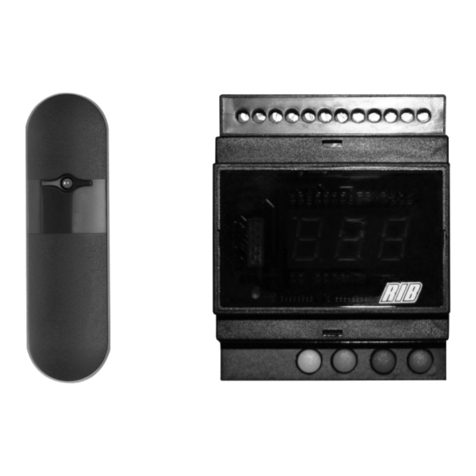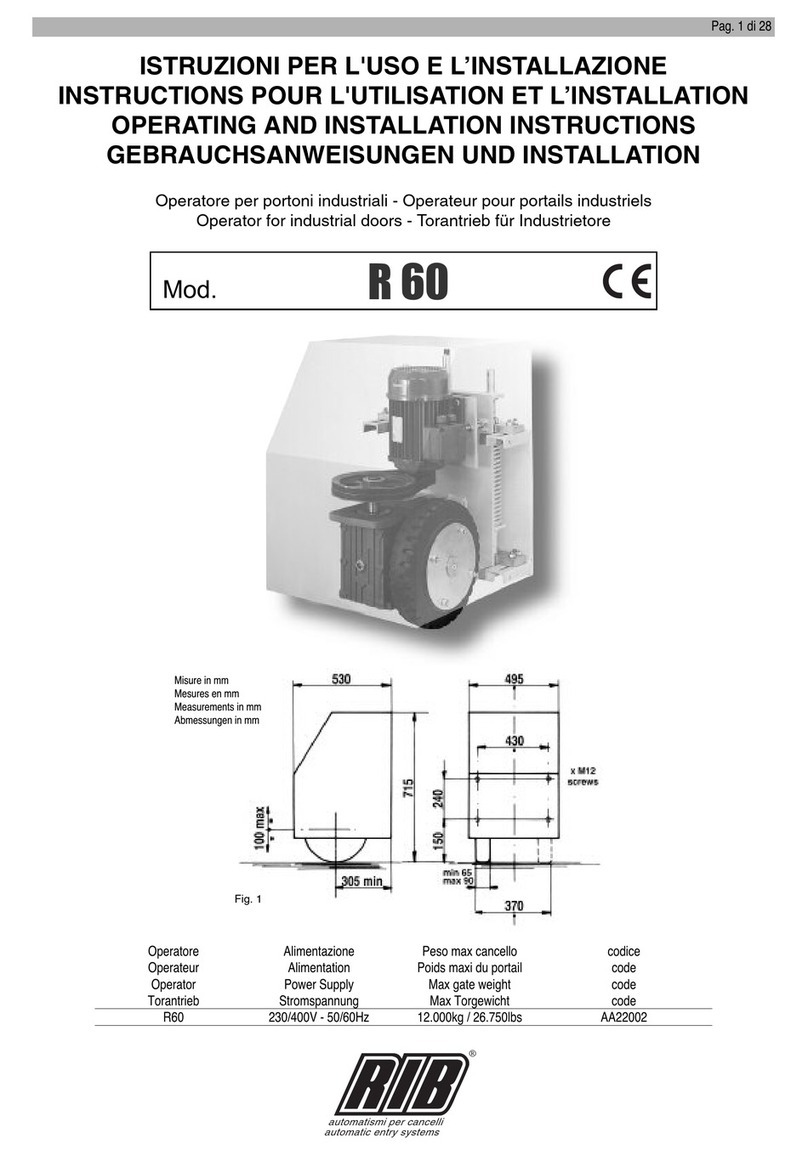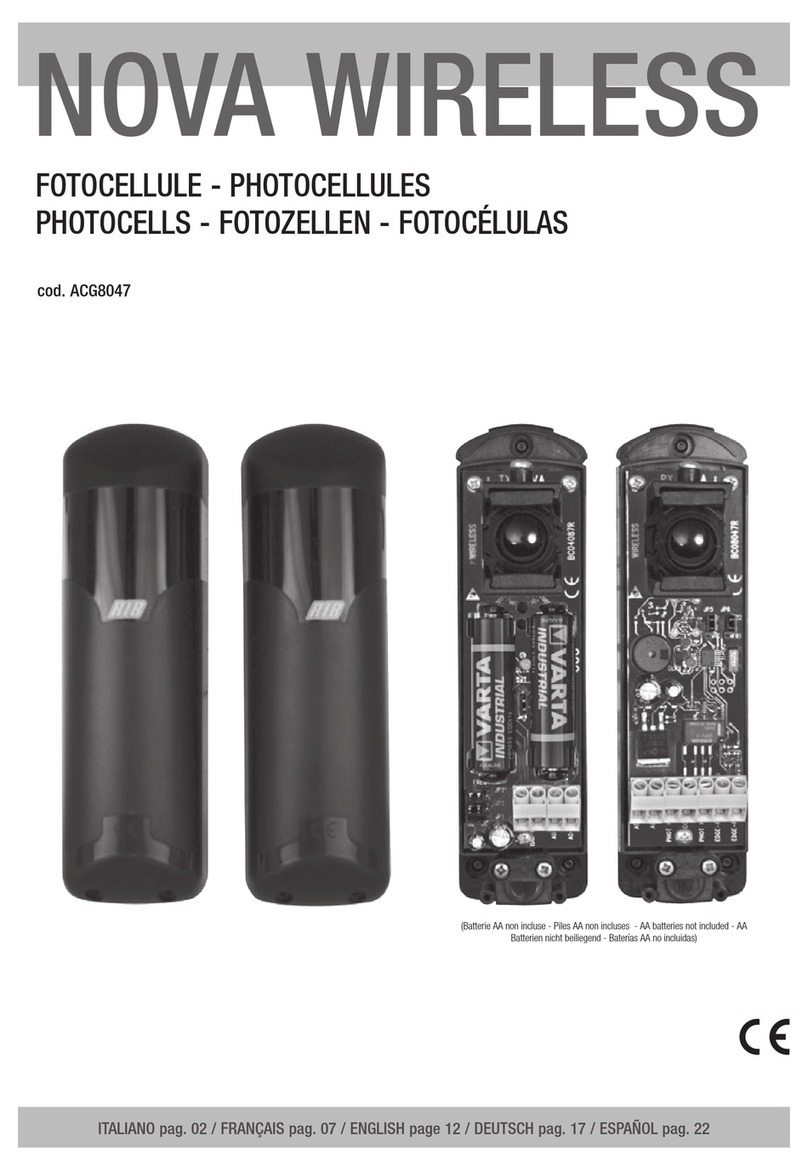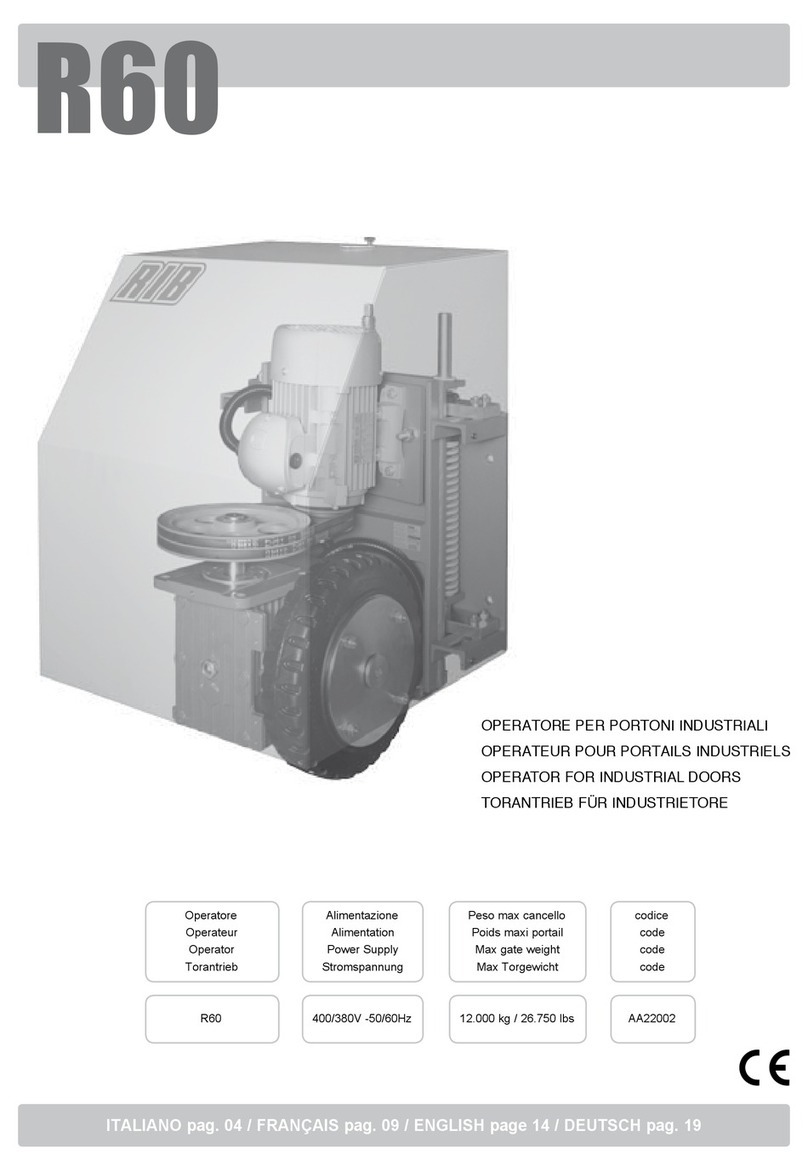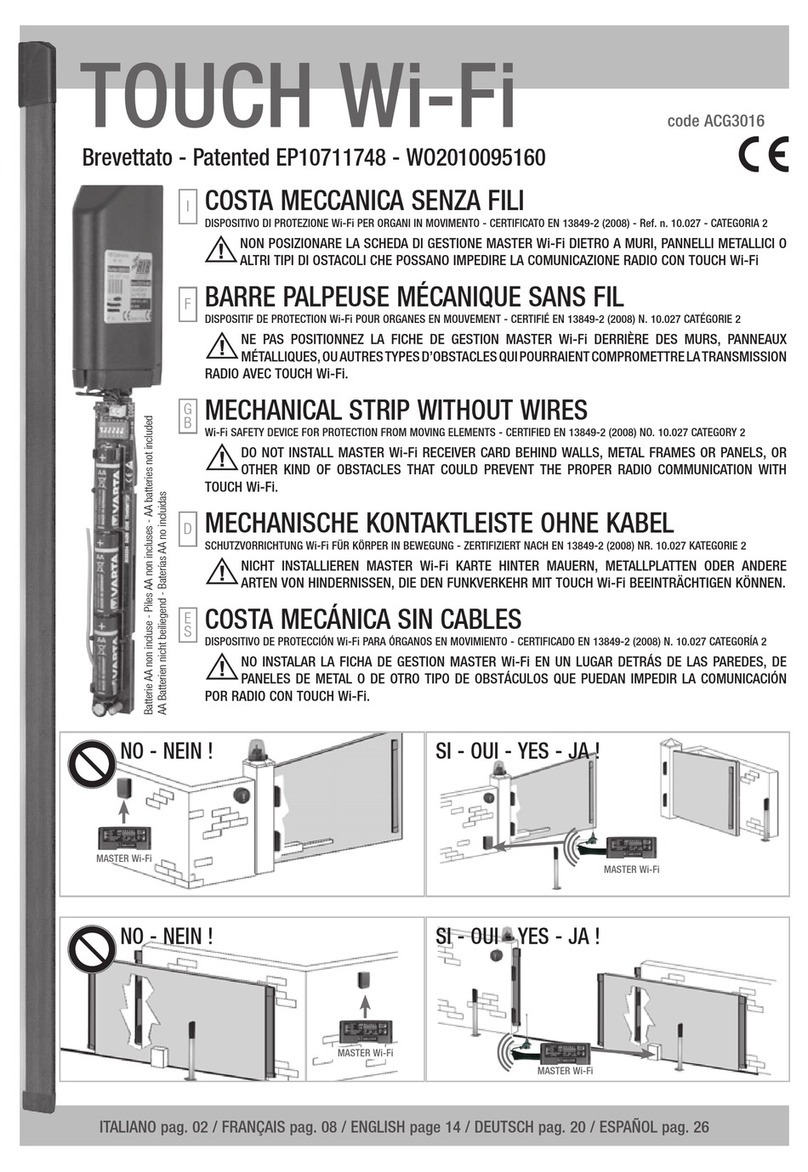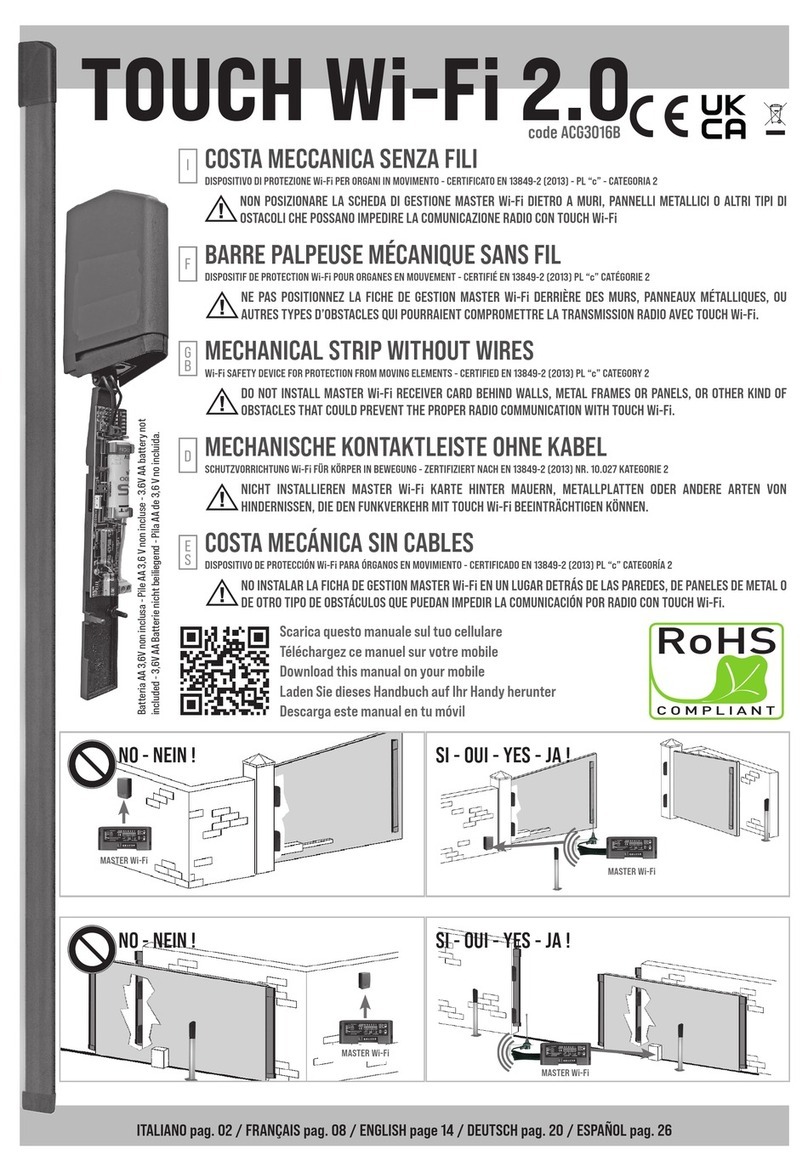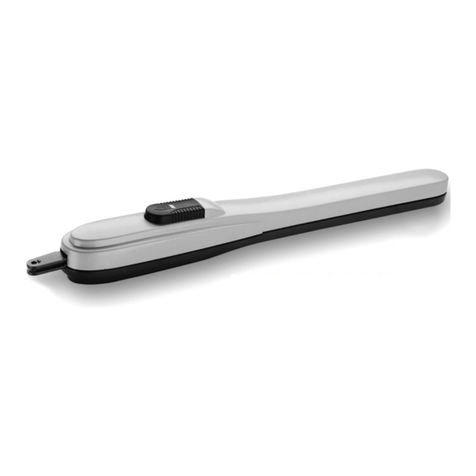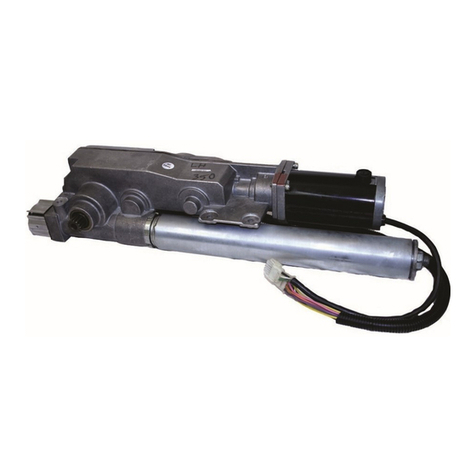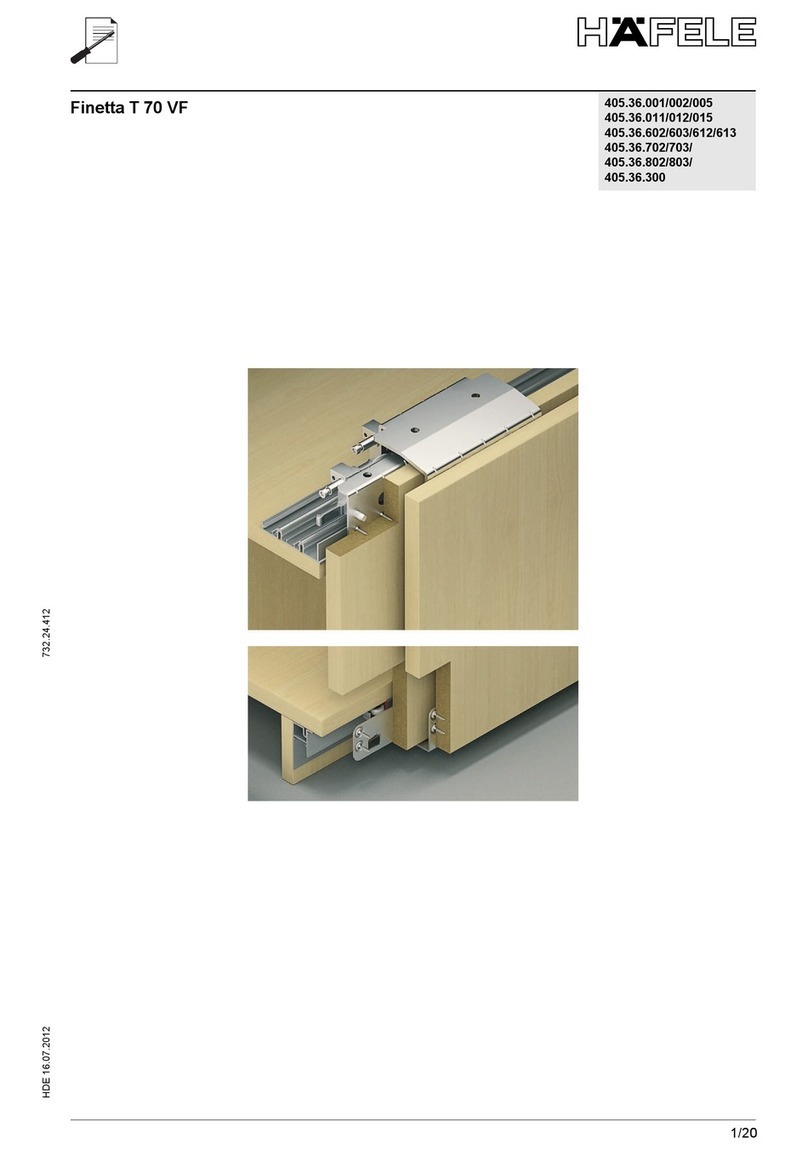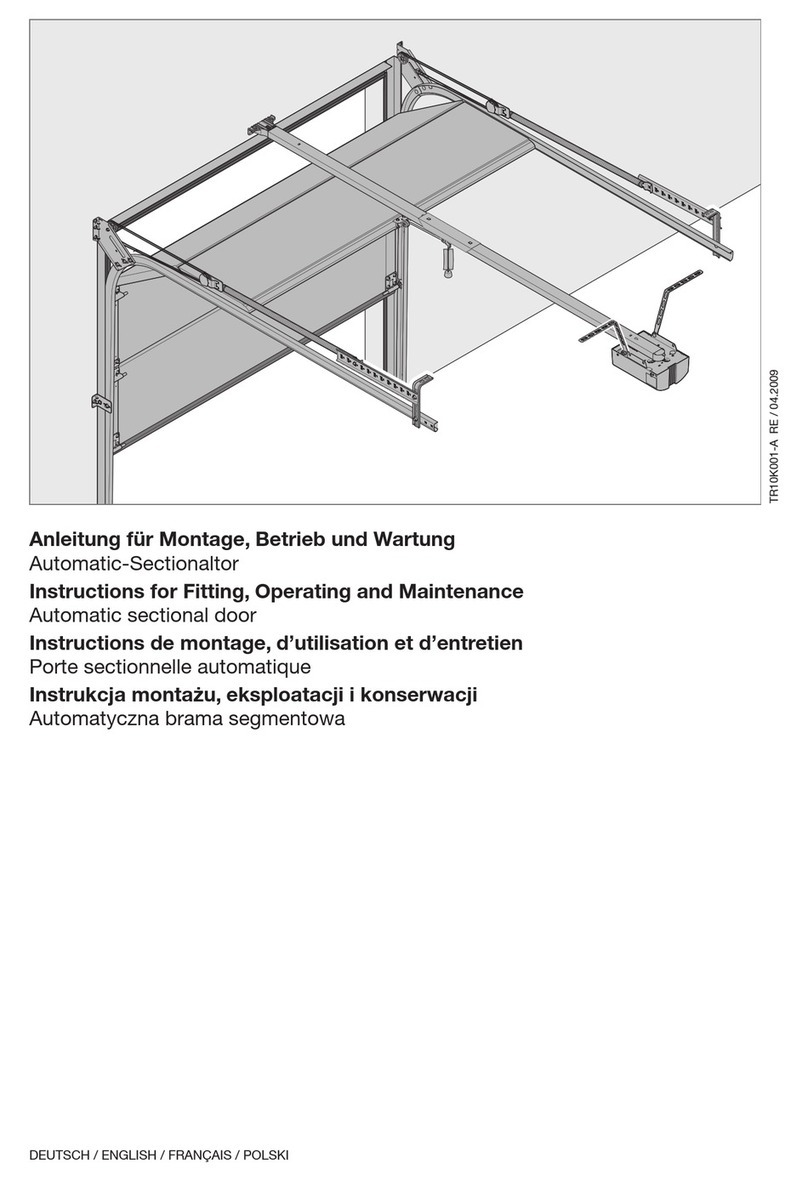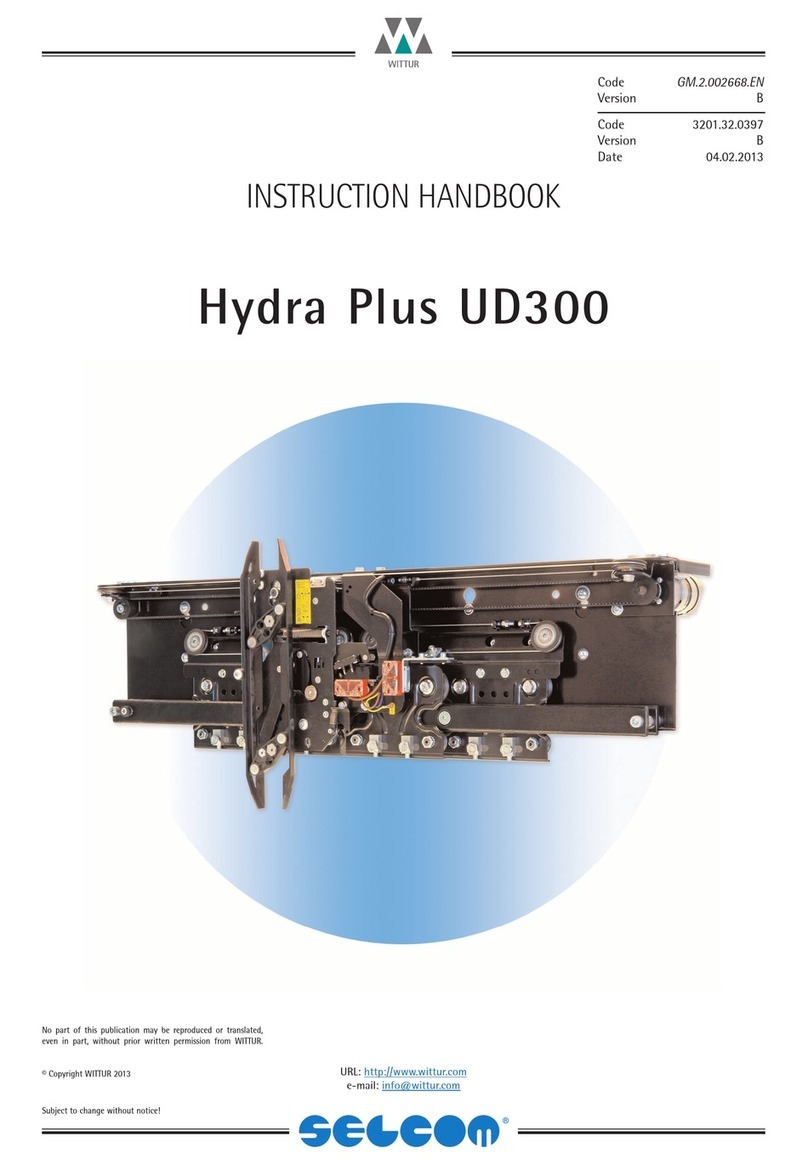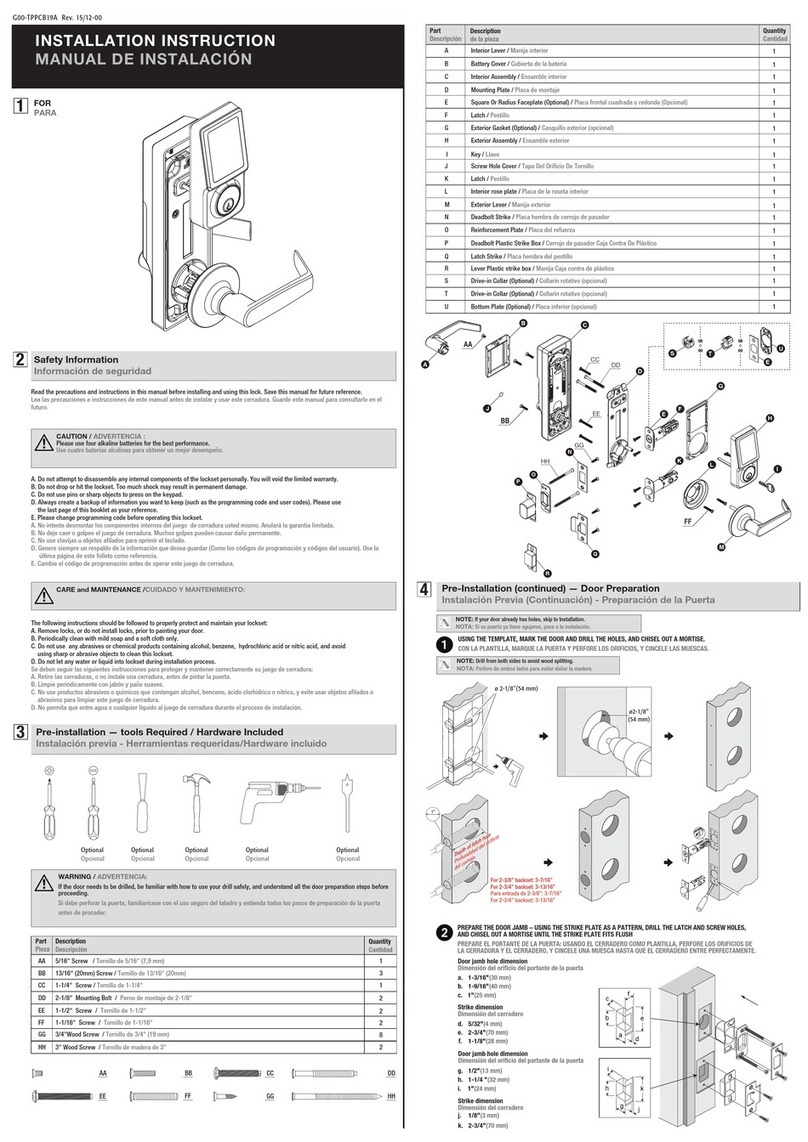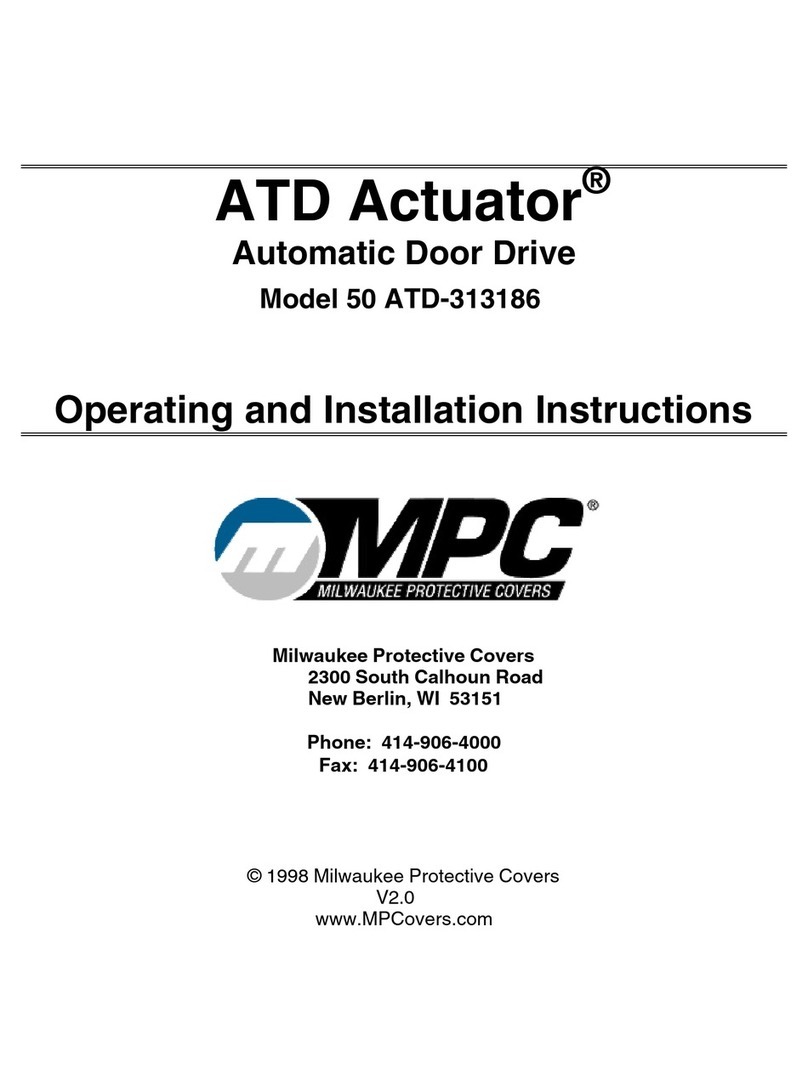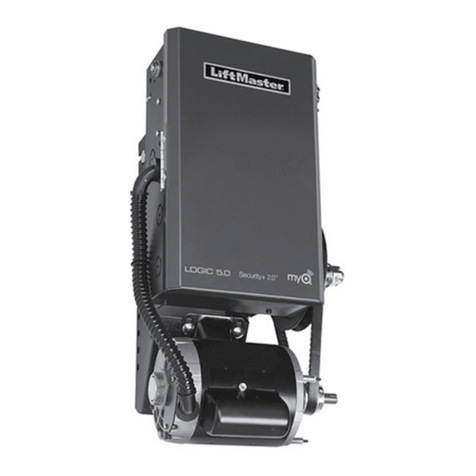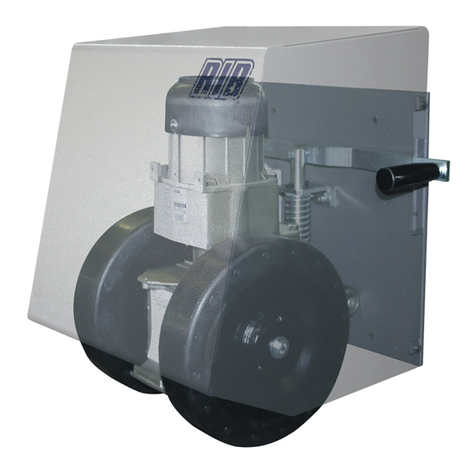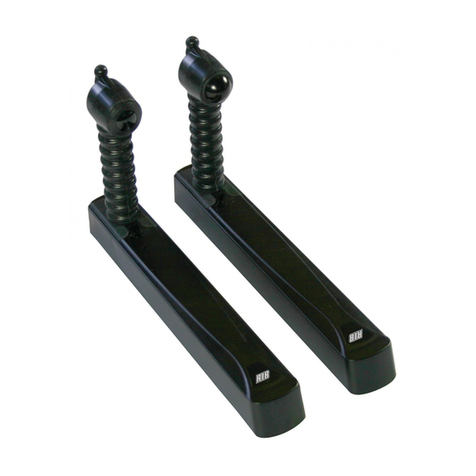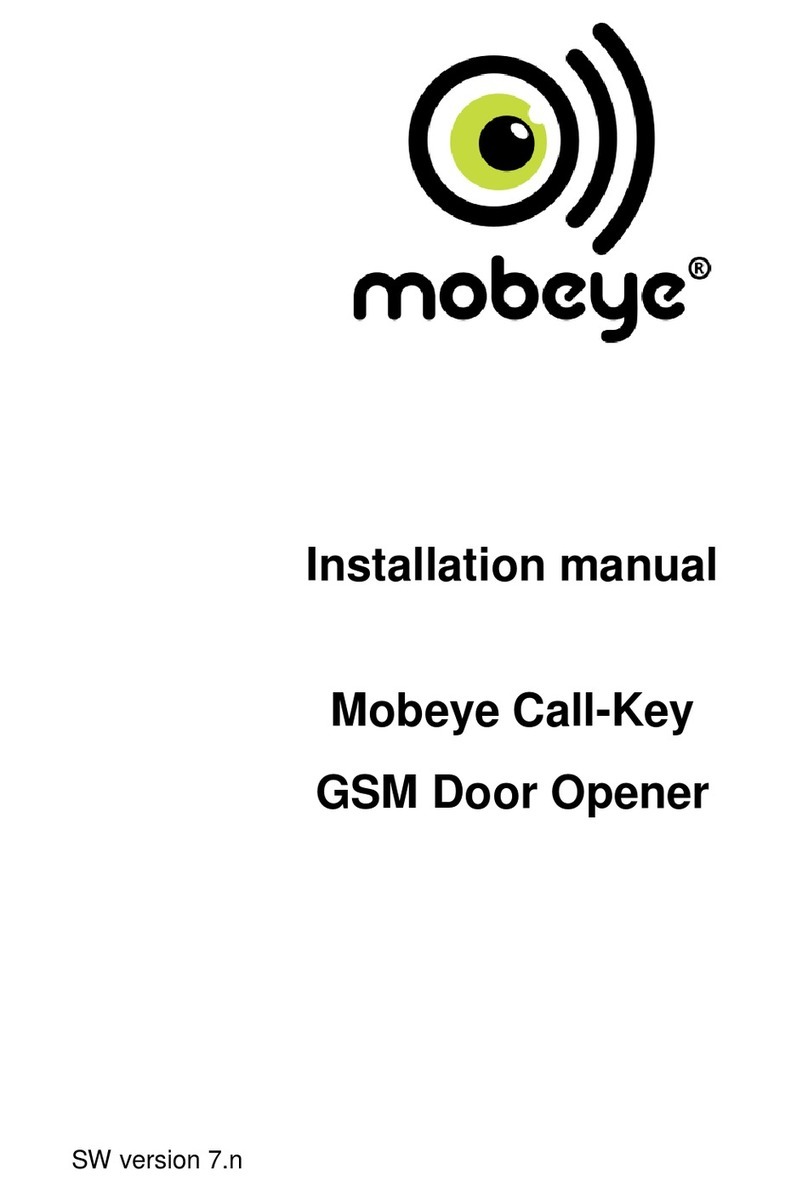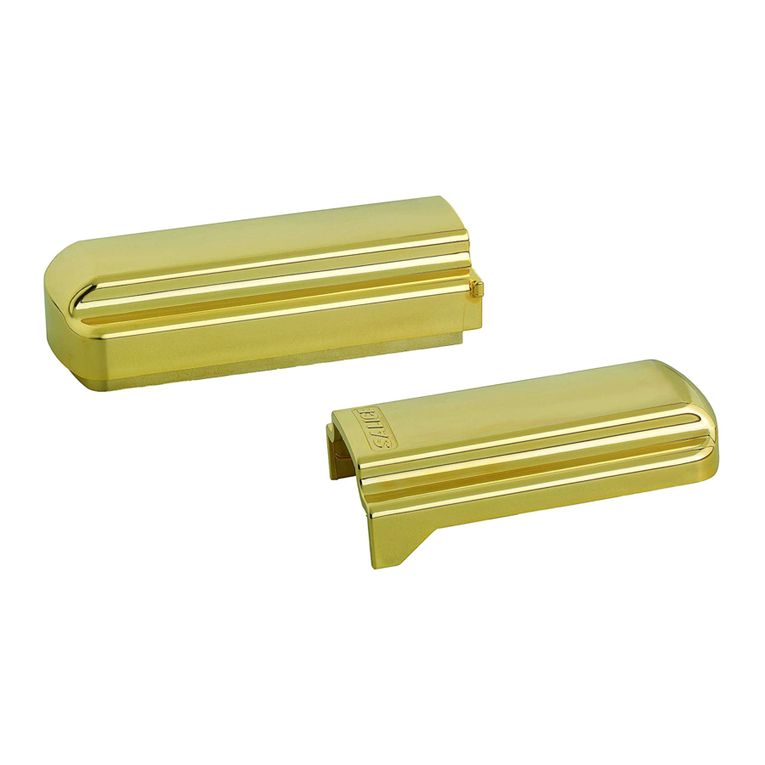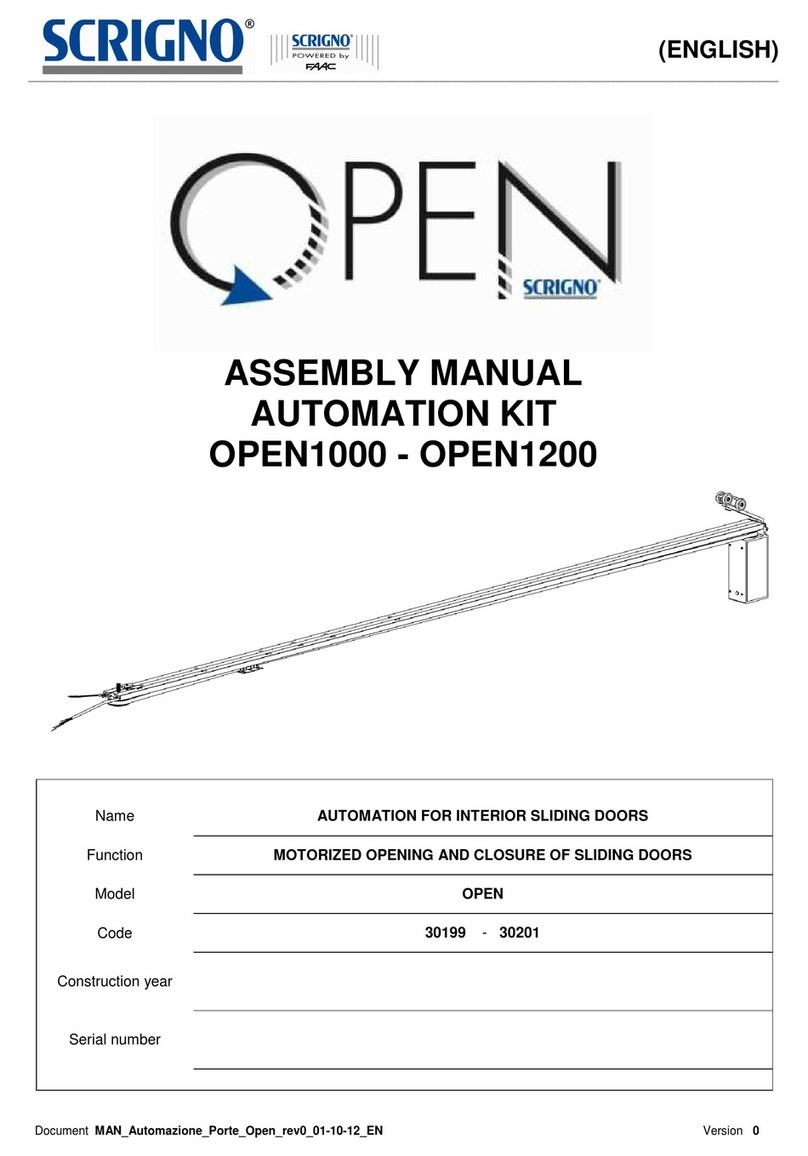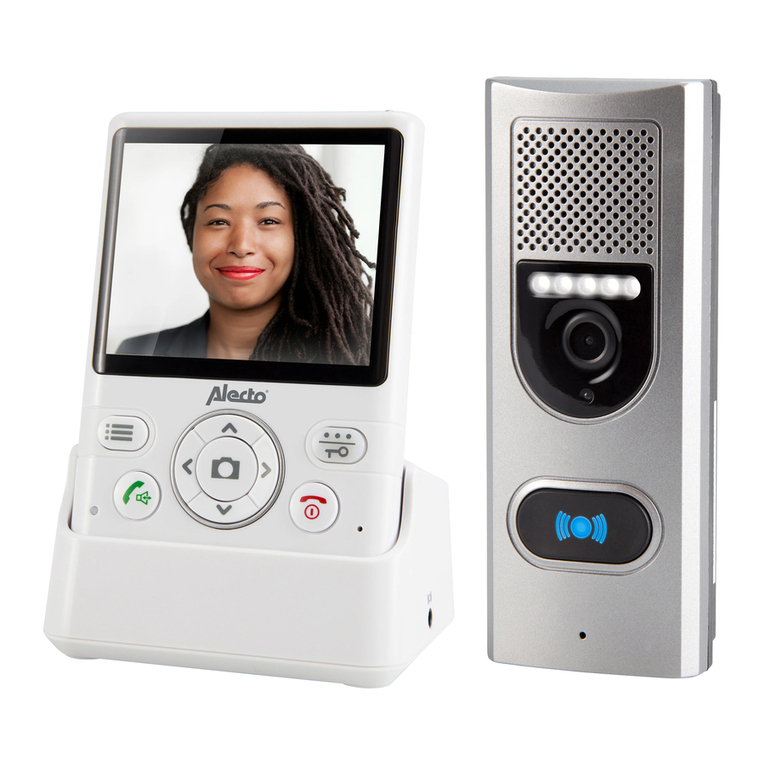
8
MEMORIZZAZIONE
- Impostare sulla scheda MASTER Wi-Fi il microinterruttore 1 su ON per abilitare la coppia
di fotocellule VERTIGO Wi-Fi da memorizzare.
Per eseguire la memorizzazione seguire la seguente procedura:
- Premere il tasto PROG RX che si trova sulla scheda MASTER Wi-Fi => il led bicolore EDGE
PHOT 1 rosso lampeggerà per 1 minuto (tempo utile per eseguire la memorizzazione).
- Premere il tasto S3 PROG sul ricevitore VERTIGO Wi-Fi (Fig. 5) con microinterruttore
1 su ON => sul MASTER Wi-Fi il led bicolore EDGE PHOT 1 da rosso lampeggiante
diventa verde e un tono di buzzer segnala la corretta memorizzazione della VERTIGO.
Contemporaneamente su MASTER Wi-Fi si accende lampeggiante rosso il led bicolore
EDGE PHOT 2 per 1 minuto (tempo utile per eseguire la memorizzazione *).
Se non vengono memorizzate altre sicurezze lasciare trascorrere un minuto oppure
premere il tasto PROG. RX per 4 volte per terminare la procedura di memorizzazione (il
led EDGE PHOT 2 si spegnerà) => tutti i led EDGE PHOT devono risultare spenti durante
il funzionamento normale.
- Montare il coperchio (7) facendolo agganciare alla base (8) nella parte inferiore tramite
apposito dente, e quindi chiudere il coperchio (Fig. 6).
- Verificare, una volta chiuso il coperchio, che resti parallelo alla base. In caso contrario,
riaprirlo e verificare che il circuito e i fili di collegamento siano stati correttamente alloggiati.
- Fissare il coperchio (7) alla base (8) con 4 viti autofilettanti TCCR2,9X9,5 in dotazione
(11) (Fig. 6).
INCOLLARE SUL COPERCHIO L’ADESIVO GIALLO CON IL NUMERO IDENTIFICATIVO
(fornito nella confezione del MASTER WI-FI)
* PER MEMORIZZARE ALTRE FOTOCELLULE VERTIGO Wi-Fi
- Premere il tasto S3 PROG sul ricevitore VERTIGO Wi-Fi con microinterruttore 2 su ON =>
sul MASTER Wi-Fi il led bicolore EDGE PHOT 2 da rosso lampeggiante diventa verde e un
tono di buzzer segnala la corretta memorizzazione della fotocellula.
NOTA: a fine procedura di memorizzazione e dopo aver abilitato i microinterruttori switch
riferiti alle sicurezze memorizzate sul MASTER Wi-Fi, eseguire una scansione dei led
bicolore EDGE PHOT premendo per 6 volte il tasto PROG. RX.
- Se successivamente alla chiusura del coperchio con soffietto RX il led rosso rimane acceso,
significa che le fotocellule sono già correttamente allineate, il led rimarrà acceso per 5
minuti, utili per le verifiche funzionali.
- Se il led rosso successivamente alla chiusura del coperchio di protezione rimane spento, a
condizione che non siano trascorsi più di 5 minuti, verificate il corretto allineamento (come
da immagine) ed eventuali anomale deformazioni dei soffietti, al termine delle verifiche il
led rosso si deve accendere.
VERIFICA DEL CORRETTO FUNZIONAMENTO
Terminata la procedura di montaggio, verificare il corretto funzionamento tra Fotocellule
VERTIGO Wi-Fi e MASTER Wi-Fi nel seguente modo:
- Verificare che sul ricevitore infrarosso RX VERTIGO Wi-Fi il led rosso sia acceso. In caso
contrario premere il tasto S3 PROG per attivarne il led rosso per 5 minuti.
- Verificare che interponendo un ostacolo il led rosso si spenga e che
contemporaneamente sulla scheda MASTER Wi-Fi il corrispondente led EDGE PHOT si
accenda di colore verde per la durata dell’interposizione.
Anche il led DL2 del MASTER Wi-Fi si deve spegnere per segnalare
l’avvenuto corretto scambio del contatto dedicato all’ingresso EDGE sul quadro di comando
motore.
- Ripetere la verifica sulle altre fotocellule VERTIGO Wi-Fi installate.
- Eseguire poi una verifica funzionale di tutte le VERTIGO installate
attivando il cancello e controllando che interponendo un ostacolo
l’automazione fermi/inverta se in chiusura, oppure fermi/continui ad aprire se in apertura.
CHIUSURA CONTENITORI VERTIGO
Applicare infine sia sul TX che sull’RX della VERTIGO Wi-Fi i coperchi copriviti (6) (12) (Fig.
2-6) inserendoli sui 4 fori di incastro in modo che aderiscano perfettamente.
ANTENNA RADIO
È già collegata su tutti i ricevitori VERTIGO Wi-Fi. NON TOCCATELA !!!
STATO DI ATTENZIONE
(avviso di sostituzione batterie segnalato da MASTER Wi-Fi)
Lo stato di attenzione (WARNING) avverte l’utilizzatore dell’imminente necessità di sostituire
le batterie.
Quando le batterie quasi scariche raggiungono i 2,3V, la VERTIGO ricevitore segnala via
radio a MASTER Wi-Fi lo stato di batteria quasi scarica e attiva il BUZZER di MASTER Wi-Fi
con un tono ogni 3 secondi per 1 minuto.
Lo stato di attenzione si rinnova per 1 minuto a fronte di un comando della porta.
Il led bicolore su MASTER Wi-Fi riferito alla VERTIGO con le batterie quasi scariche, si
accende fisso di colore rosso.
Durante queste segnalazioni lo stato del sistema è ancora funzionante, ma è opportuno
sostituire al più presto le batterie evitando il blocco funzionale del cancello che avviene al
raggiungimento dei 2,0 V.
Nota: Il lampeggiatore SPARK Wi-Fi durante lo stato di attenzione cambia la modalità di
lampeggio eseguendo 2 lampeggi ravvicinati seguiti da 2 secondi di pausa.
STATO DI ALLARME (segnalato da MASTER WI-Fi)
Lo stato di allarme si attiva con batterie completamente scariche (2,0 V) o con guasto della
VERTIGO.
Su MASTER Wi-Fi i led DL2 e DL3 si spengono bloccando l’automazione in quanto non è
garantita la funzionalità di una delle VERTIGO installate.
Su MASTER Wi-Fi (fw 01_04_13) il led rosso/verde riferito alla VERTIGO con batterie
scariche o guasta lampeggia di colore rosso.
Il BUZZER emette un tono ogni 3 secondi per 1 minuto richiamando l’attenzione
dell’utilizzatore che dovrà sostituire le batterie o riparare la VERTIGO.
Lo stato di allarme si rinnova per 1 minuto a fronte di un comando della porta.
PER ESCLUDERE LA SINGOLA VERTIGO DAL SISTEMA Wi-Fi LEGGERE IL MANUALE
DELLA SCHEDA MASTER Wi-Fi.
SOSTITUZIONE DELLE BATTERIE
La durata delle batterie applicate alle fotocellule VERTIGO Wi-Fi è di circa 3 anni.
- Identificare quale VERTIGO ha le batterie scariche guardando i led EDGE-PHOT sulla
scheda MASTER Wi-Fi.
- Identificare la coppia di VERTIGO con le batterie scariche guardando il led EDGE-PHOT che:
- lampeggia alternativamente rosso/verde (se in allarme)
- su Master Wi-Fi fw 01_04_13 lampeggia rosso (se in allarme)
- acceso rosso fisso (se in attenzione)
- acceso verde fisso (se batteria trasmettitore VERTIGO Wi-Fi scarica)
- Ricercare sul contenitore delle VERTIGO l’adesivo giallo con il numero di identificazione
corrispondente.
- Sostituire le batterie sia sul trasmettitore che sul ricevitore facendo attenzione al rispetto
delle polarità.
- Premere il tastino S3 PROG della VERTIGO ricevitore per riattivare il funzionamento di
MASTER Wi-Fi. Il buzzer a bordo della scheda MASTER Wi-Fi se attivo si spegne e i led
DL2- DL3 (se in allarme) si accendono e il led bicolore riferito alla VERTIGO a cui sono
state sostituite le batterie si spegne.
L’automazione è pronta a ripartire in tutta sicurezza.
ATTENZIONE: Vi ricordiamo che le batterie vanno smaltite secondo le Norme vigenti.
In caso di rottamazione delle fotocellule vi ricordiamo di togliere le
batterie e di smaltirle secondo le Norme vigenti.
PROCEDURA DI CANCELLAZIONE DELLA SINGOLA VERTIGO IN CASO
DI GUASTO O SOSTITUZIONE
Per cancellare una singola VERTIGO memorizzata su MASTER Wi-Fi, procedere nel seguente
modo:
- Premere una o più volte il tasto PROG. RX per selezionare il led bicolore EDGE PHOT, che
lampeggia di color verde, corrispondente alla VERTIGO da eliminare.
- Selezionata la VERTIGO, premere e mantenere premuto il tasto PROG. RX per 10 secondi.
- Al termine dei 10 secondi il led bicolore EDGE PHOT lampeggia per 6 volte alternativamente
di colore rosso e verde, segnalando l’avvenuta cancellazione.
ATTENZIONE: Posizionare su OFF il microinterruttore relativo alla VERTIGO eliminata
e premere per 6 volte il tasto PROG. RX. per eseguire una scansione dei led bicolore.
IMPORTANTE: Togliere le batterie alla sicurezza eliminata.
I
12/24V ac/dc
PROG RXDL2 LED BICOLORE EDGE PHOT
RICEVITORE SEGNALE INFRAROSSO - RX
